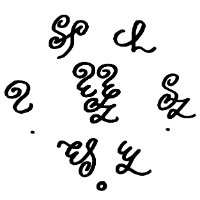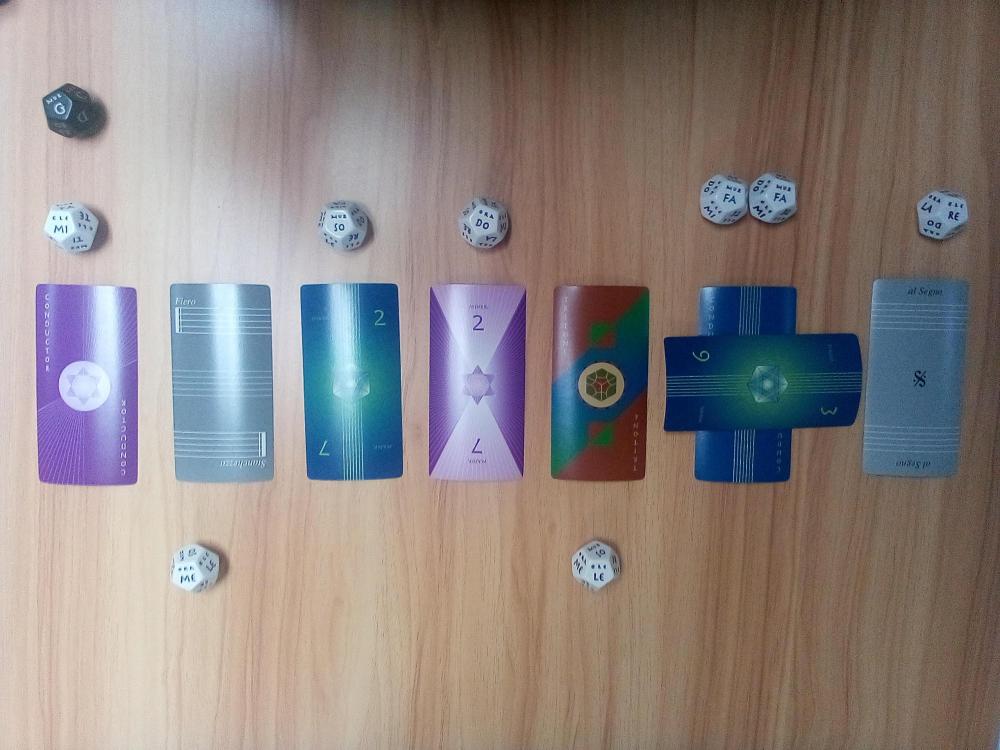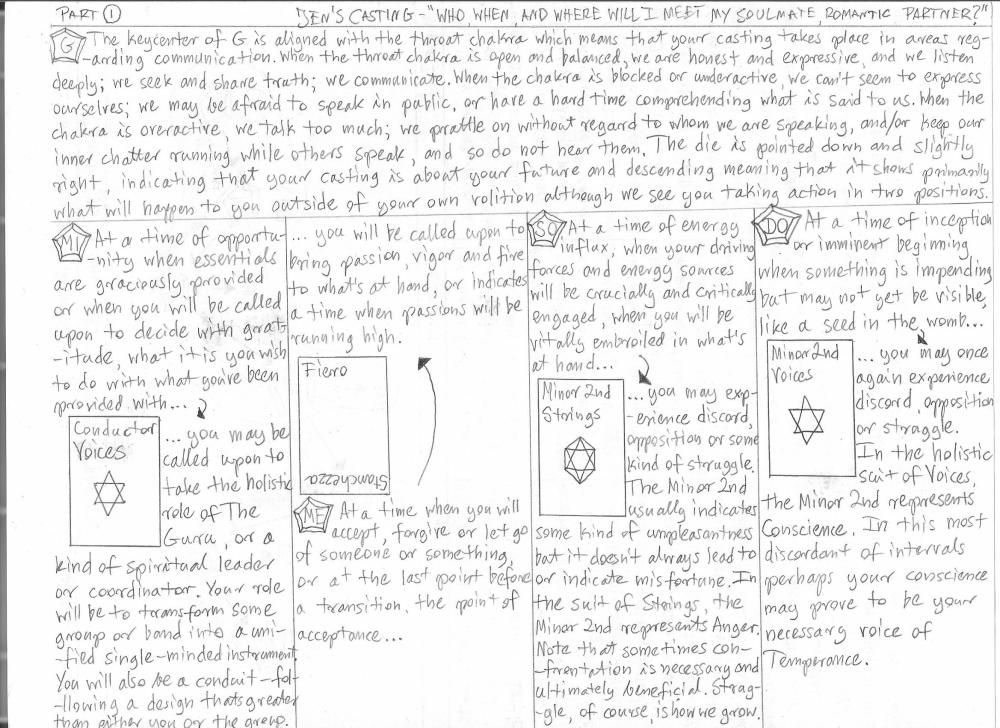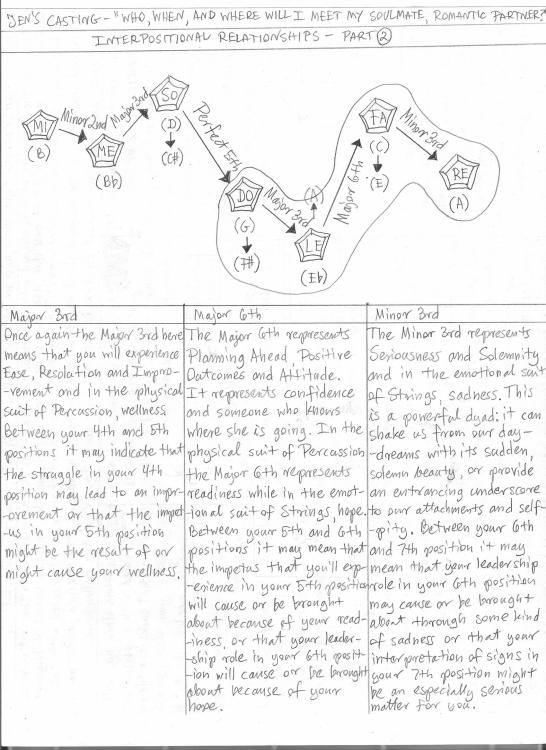Leaderboard
Popular Content
Showing content with the highest reputation since 12/14/2025 in all areas
-
Hello, all. Coming at you with something a little different for the event, but I hope you find it at least interesting, even if you don't particularly like it. I've basically decided to get really good at writing for strings nowadays, and since I'm mostly an atonalist, cello is the easiest since computers can't play that kind of stuff; the implied timbres are super important. So enjoy hearing me poorly play this miniature fantasia on Jingle Bells. I promise there's a method to the madness 😄4 points
-
In anticipation for this year's Christmas Eve, I decided to try my hand at writing another religious motet. Considering the fact that the bulk of this piece has been composed merely in the span of yet another insomnia-driven bout of inspiration, perhaps its modest length may as well be a reflection of missed potential, as I reckon it could have been developed into a more complex structure should its latter half not have got stuck on a protracted pre-cadential spiral. Once again, just as with my previous vocal fugue, the main goal of this composition was to make the text as intelligible as possible (specially taking into account the musical history of such a well-known textual setting), that is, within the confines and constraints of an 8-voice motet. This has ultimately led to some interesting contrapuntal oddities which, despite the preservation of independent voice-leading and thorough avoidance of melodic and harmonic blunders, have produced a number of somewhat unorthodox unresolved dissonances throughout. Nevertheless, I believe such contrapuntal licenses are more than sufficiently justified given the scope of this piece, as well as the sheer volume and density of its texture all the way through. This piece was specifically conceived as a submission for this year's edition of the forum's Christmas Music Event, and shall be presented accordingly in its dedicated thread. YouTube video link:3 points
-
March of the Snowflakes is an orchestral miniature written in a quasi march tempo, inspired by the playful motion of falling snow. This piece was composed as a small seasonal contribution to the Christmas Challenge 2025. I would be very grateful for any feedback, comments, or suggestions. Thank you for listening and sharing your thoughts.3 points
-
Here's a little Christmas card for y'all I found from a few years ago. It's probably not the best fugue ever written, not by a long shot, but it's fun. Composed: December 22 - 24, 2017 at Austin Scoring: Keyboard solo Style: Baroque Duration: 2:093 points
-
Hey there Matthew, Do you have a teacher? Or do you study music on your own with online course guidance? My opinion is do what you want, learn what interests you, but I think it's really advantageous to continue with tonal harmony. When you learn why tonality broke down, it helps with understanding the motives atonal music is trying to achieve. Also, post your music if you haven't already! That'll really help with your growth, as even strangers on the internet can provide a wealth of knowledge. Cheers buddy3 points
-
This is my first attempt (excluding some best-forgotten teenage stuff) at writing a concerto. The style is my own blend of Classical and some early Romanticism and perhaps a dash of Baroque, but I wrote for the modern valve trumpet. Admittedly, the tessitura may be a bit high, frequently going up to the 8th and occasionally the 9th harmonic. Any comments or feedback would be most appreciated!2 points
-
I come to you once again with my 12th Muzoracle casting! This time, Jen asked the Muzoracle "who, when, and where will I meet my soulmate, romantic partner?" (Muzoracle is a storytelling/fortune telling/divination tool similar to the Tarot card deck, but with cards with musical concepts and 12-sided Musician's dice and Solfege dice. Perhaps it may be thought of as a special musical Oracle card deck.) My interpretation of the cards and dice are displayed below. Since the casting featured two cards in the suit of Voices, I used a Soprano and an Alto. Also, there were three cards in the suit of Strings, so I used Violin, Cello and Guitar. Finally, there was a card in the suit of Percussion, so I used the Piano. I chose the Piano and Guitar because Jen has played these instruments in the past and she also happens to be an Alto. If you'd like to find out more about Muzoracle and how castings are interpreted go here: https://muzoracle.net/ This short musical interpretation of Jen's casting is about ~2 minutes long. Since the black 12-sided Musician's die landed on G, the piece is in the key of G which pertains to the throat chakra. I created the following melodic/harmonic underdrawing guided by the cards and the dice. Since the first card drawn was a Conductor of Voices card, I started with a lone soprano singing a chromatic neighbor tone to B, A#. The Violin and Guitar come in next since the Minor 2nd of Strings was drawn in the 3rd position. Following is the Alto which joins the Soprano since the Minor 2nd of Voices was drawn in the 4th position. Finally, the Piano comes in when the Tritone of Percussion card was drawn in the 5th position. The whole piece is repeated since the De Segno al Fine card was drawn in the 7th and final position. If you've gotten this far, thanks for reading! And I hope you enjoy listening to this short vocal chamber work I wrote to represent Jen's Casting. Comments, critiques, suggestions, or observations are of course, always welcome. Thanks for listening!2 points
-
Hi guys! Hope you're all doing well. So, I wrote a poem two months back, and whilst I did, I also made a melody out of it just because lol. So, I thought it had the potential to become an art song, so I composed it. By the way, this song just contains the first stanza of my poem. Do you think I should make more songs for each stanza to do like a song cycle or something? Anyways, I sang this myself because I find vocal soundfonts to be... nauseating. Anyways, I am no singer, so try not to roast me too much for my voice lol. Do tell me how you like it, or if you have any suggestions.2 points
-
Indeed. The similarity in timbre of instruments within their respective families often tends to muddle the trajectory of individual lines amidst the density of the texture, as has frequently happened in my keyboard compositions even for just 4 voices. But the human voice still retains that distinct timbral quality to it, somehow capable of preventing its integration into a larger choral whole from forsaking the uniqueness of its sound and the meandering of its melody. A testament, perhaps, to how vocal music was upheld as the most sacred during the Middle Ages and the Renaissance; not just because of the references to the purported sanctity of the natural human voice in the Old Bible and the Gospels, but because its endless versatility and potential in conjoining doesn't undermine the independence of each line nearly as much as it otherwise does for mere instruments. Thomas Tallis himself certainly took this to the absolute non plus ultra with his renowned Spem in alium, and yet, the fact that 40 voices singing simultaneously may still be perceived as individually separate with each listening instance still leaves room for even more ambitious polyphonic endeavours to be produced (although it would certainly be beyond overkill to even try). Thank you kindly as well! Though unfortunately I have bad news concerning the languages supported by the current version of Cantāmus: In any case, I'm sure a real choir would be far more adept at singing in Polish than the vaguely synth-sounding lyric renderings Cantāmus usually provides, though of course such an eventuality would come at a far greater cost. Perhaps an online choir with individual part recordings being carefully timed and assembled together might do the trick. Otherwise, a live premiere with a professional choir would be my best bet. Either that or browsing the Internet for competitors, of which I know none whose lyric rendering quality comes even close to that of Cantāmus.2 points
-
Hi @PeterthePapercomPoser, thanks for the kind words. Yes, a lot connects to the original them in some way, but obviously in a way that's idiosyncratic to me, right? There are some very obvious things like this... ...and there are other pretty obvious quotes: mm. 17–18 are just the latter half of the main theme's antecedent phrase, mm. 19–20 are a condensed version of the antecedent as a whole (<E, G, C, D, E, F, (E,) D, G>), and the notes for the tremolo parts are the first three notes of the theme (<E, G, C>). But then there are just decisions that I made artistically. For instance, I think the idea that the main melody of the non-introductory carol can be condensed into a pentachordal diatonic subset with only one semitone is very fascinating, so I emphasized the semitone throughout my setting as like an opposite to diatonicity. So lots of semitonal dyads (both harmonic and melodic) all about. Sounds rough, which I like, and also meets the design philosophy. For example, passages like m. 16 where there are both ic1s and ic2s, which, to me, emphases that friction between the diatonic and chromatic. But, to be honest, I didn't think that hard about it, haha. Most of the time, I just kinda liked the dissonance 🙂 I think the fact that you can hear echoes of the original is way more interesting than having every single thing be attached to it. Thanks again for your eyes and ears!2 points
-
Hi @Monarcheon! It's so smart and creativer for you to divide the original Jingle Bells melody to different segments and place between interlude passages like the tremolos. Those techniques like sul ponticello, tasto, vibrato and harmonics are really used with great effect, and as you say, the implied timbres are super important for this to really give a refreshingly new look to an otherwise clichéd melody! You are just too humble! Your playing is so good here and I promise I enjoy it wholeheartedly! Thx very much for playing this yourself, the computer rendition would be umch worse than your playing! Also, thank you for joining the event and becoming more active again in the forum! P.S. Honestly if Peter didn't sneak in giving you a badge first, I would give you one too! You totally deserve the "String Aficionado" badge! Henry2 points
-
Here is my submission: https://musescore.com/user/89049631/scores/29505320/s/jl-md7 And here is the pdf: https://drive.google.com/file/d/1oi66fwxpfjm4bvBB6mYQ9d5GGz-afdB2/view?usp=drivesdk I hope you enjoy it! ( ╹▽╹ )2 points
-
Here's my submission! Perhaps I should have waited till Christmas Eve for its publication, though in the end I reckoned the sooner might as well be the better. P.S.: I wholeheartedly agree with the distressing concerns brought forth by @AngelCityOutlaw regarding the AI-generated music submitted for this event. It should go without saying that allowing AI-generated material to be presented on par with compositions requering hours upon hours of effort and dedication could run the risk of severly undermining the legitimacy and ultimate purpose of these community events, not just on account of the frictions and controversies caused by the presence and promotion of AI-generated content, but also on a more fundamental level which has been thoroughly implied over the course of this discussion. Despite this, I firmly believe those who want to participate and submit their art should not hesitate to do so. Why let so much time, effort and dedication go to waste after creating a work of art that is in any capacity worth far more than mere AI imitations? My take is that we should not be deterred, but rather emboldened in the face of these dire circumstances we are living through, that we may adapt to this unsettling trend and make our art known regardless. In fact, that's precisely why I think it's more important than ever not to refrain from posting our own music, lest we inadvertently pave the way for more of this AI-generated music to claim our place. It is rumoured that the Dead Internet Theory may as well soon become an increasingly encroaching and inexorable reality. By refusing to yield to the tide and sharing more of our own creations, hopefully we might briefly forestall such a harrowing prospect for this tiny little corner of the Internet where so many creative wonders are being posted and discussed every single day. The point is not to force these AI-generated compositions out by decree, but to make it so that the abundant music produced by humans in this forum may flourish beyond the scope of neural networks being used as amoral tools or shortcuts to achieve similar results in appearance, yet severely lacking in personal significance, emotional depth or even a core message capable of steering the course of the compositional process. Banning AI-generated music will not ameliorate the problem at large, but composing music through righteous hardship might as well be the only substantial antidote against the proliferation and normalization of this kind of content. That being said, I'm certain this must be quite a difficult point of contention for the forum's staff to deal with and try to find a meaningful solution for, so I won't comment further on the subject matter. In any case, I hope whichever resolution or agreement is reached on this issue will allow the course of these community events to carry on peacefully and with respect towards the time, effort and dedication proportionally invested into each submission. It is good to know that this matter is being seriously discussed by staff and high-ranking members alike, and as such I would like to thank @Henry Ng Tsz Kiu and @PeterthePapercomPoser among others for their dutiful labour in calmly trying to sort out things amidst the heat of the debate.2 points
-
Wow... Your voice is wonderful, I love the timbre and emotion in your singing. Don't be bashful about it! Do I think you should do more songs? Definitely :) Please keep writing and performing these, I had no idea I'd like your vocal music so much2 points
-
2 points
-
You can just reply to your topic with a new post posting the edited music, or if you don't want to retain the old version, just simply edit the original post with the edited version of the music. Henry2 points
-
I've only recently started this, but I would love to hear suggetions 😄 nutcracker inspired.pdf nutcracker inspired.mp32 points
-
Hi @PeterthePapercomPoser I have made it viewable for anyone!2 points
-
Reporting them meant nothing. Their Suno prompt is still in the event and the staff didn't even really offer an explanation for why they did a 180 in a matter of minutes. You have to have principles and actually stand by them or else your principles don't mean ѕhіt. I am against AI-generated music and I will not spend precious, authentic composing hours to participate in anything alongside charlatans.2 points
-
I’m a 16-year-old trying to become a composer, and I’m pretty much new to this forum! I really want to express myself in more modernist idioms, but I’m still developing my technique. Right now I’m working on a traditional harmony course, and I’m at the point of cadences and simple modulations. I’ve composed several tonal pieces, including a mazurka, a sonata movement, and a late-romantic waltz. I guess my question is whether I should compose many more “traditionally tonal” pieces before moving to the idioms that excite me more? If so, when is the point when I can move to non-functional harmony? Or can I just study traditional harmony on the side, but try to compose more modern-sounding music? I have already been doing this to a certain extent (my late-romantic waltz). Thanks for any suggestions! —Matthew2 points
-
My general advice for those who want to learn the craft--and this will sound cliche--is to start at the beginning. This is known as theory. Most harmony books cover basics first(meter, intervals, etc). But I think, it is best to jump start on those topics by either learning an instrument or self-study. Each of their benefits. When I learned theory, it was through my piano lessons. Teachers either use Alfred or Faber or Faber. Both have theory work book. The theory workbook expands on lessons and provides exercise to train you. So let us say you were learning about 3/4 in a lesson. The theory book would go more in depth and other books that cover aspect of the lesson. The second option is self taught. Alfred has music theory book: Alfred's Essentials of Music Theory: A Complete Self-Study Course for All Musicians (Book & 2 CDs): Surmani, Andrew, Surmani, Karen Farnum, Manus, Morton: 0038081232973: Amazon.com: Books Getting ahead of start on this place you ahead of the class. You can probably skip the chapters on theory and go to next part...counterpoint.1 point
-
https://www.noteflight.com/scores/view/71e5c9cb2af83e1b63286b8d3463d66cbc0d02fb Untitled (2).mid1 point
-
I've taken the Christmas Carol's "Angels we have heard on high" and "Gdy się Chrystus rodzi" (a Polish Christmas Carol which translates as "When Christ is being born"). I wrote two variations on this Polish Carol last year and you can find them here to become more familiar (if you want): There was some confusion in that thread about which Carol I was actually working on (LoL) owing to the fact that both of these Carol's prominently feature the Latin lyrics "Gloria in excelsis Deo". But that was basically the inspiration for putting them together in this mash-up. I painstakingly entered multiple stanzas of the Polish, English and Latin lyrics into the pdf score with all the correct accent marks and whatnot so let me know if it's clear! Thanks for listening and comments, suggestions, critiques or just observations are always welcome! Merry Christmas and I hope you enjoy listening! ☃️1 point
-
i love how the dissonances compliment the rising motion of the polish chorale leading up to the "gloria," and how you variate the "in excelsis" in sequence going to a third and then to a PAC of "deo" the mashup between the two songs really works together and i loooove the ending: the high violins repeating the "gloria" section (actually, they just switch up place with the violas and cellos from bar. 10 onwards), the highest register of the piece being used only at the very end, the harmony stays still and doesn't show any harsh dissonance except the one on bar 18 cellos, going chromatically from B-flat, B, and C for the final cadence, and finally, the end chord, I over IV, is just a nice tie over the whole thing i let out a sigh great piece dude !!!1 point
-
I have finally finished! https://www.youngcomposers.com/t48750/2025-christmas-event-submission-march-of-the-gingerbread/#comment-11867627891 point
-
1 point
-
Ooh, I just dropped a short Christmas-y piece in with Piano/Keyboard works. I'll mark it as my submission if that's okay, or do I need to post it here?1 point
-
@Kvothe Thanks very much for listening, and your analysis! I'm glad you liked how things progressed. And thanks for your compliments on the development. I always sweat blood on developments, they never come to me easily.1 point
-
Nice piece! Some nice use of a 'rare' dissonance. It is definitely inspiring, your effort, that you took to make a 'beethoven symphony 9' sized orchestral work. Choir, Orchestra...1 point
-
This piece is really a masterpiece in my opinion, which achieves both structural rigor and sensuous timbral imagination. It's a marvelous creation of the late, mature Boulez, an antidote to those who view him as an avatar of avant-garde academicism (sorry for the alliteration, I couldn't help it). This is the Boulez who was formed by the thinking of Mallarme and Paul Klee: a real theorist of musical color, whose best music effortlessly fluctuates between delicate restraint and violent explosion. Sur Incises also has a kind of intimacy and sensitivity to resonance: his chosen instrumentation functions as a "deconstruction" of the piano timbre, not in order to invalidate it, but in order to more fully reveal what lies beneath its surface. So there's almost a connection to spectralism. Any other Pierre Boulez fans out there?1 point
-
Hey @therealAJGS, This one is surely festive and light hearted as we all can hear in the grocery shops and supermarkets this month lol. The ending is quite funny haha. Thx for sharing! Henry1 point
-
Well I guess you have to be clear with what you wanna achieve, like harmonic, timberal, thematic, rhythmic fullness or whatever fullness haha. I guess if you work this way, you have tp achieve harmonic fullness in the SATB first, which is to allow all the tones of a chord whenever possible. Then when you arrange it to band, the orchestration matters for the timberal fullness. Henry1 point
-
While don’t like to use too many labels, I would say I personally gravitate towards music that has a rich use of rather coloristic harmony, with a strong feel for natural resonance, strong formal logic and internal coherence, as well as a sense of direction. I think of music often in terms of space: my ideal music opens up spaces and dimensions that the listener may not have foreseen, while remaining colorful and somewhat transparent. My biggest inspirations musically are probably Messiaen, Beethoven, Wagner, Debussy, and Scriabin (not to mention Grisey, Saariaho, and late Boulez). Because of my interest in tonal space and acoustics, I like to utilize geometrical lattices of tonal space, and much of my musical understanding is shaped by them. I think that’s good advice: keep building technique, but also attempt to compose the music you want to compose on the side. I’m excited to undertake this journey of developing my personal voice, thanks for the encouragement! And I do tend to be quite critical of my own compositional attempts: but the great thing about posting for others to evaluate is they’ll provide constructive criticism, and real feedback for improvement. That’s something I can’t do on my own!1 point
-
I'm withdrawing my participation. Competition or not, if you're putting on essentially a display of music created by members and also giving out site badges for them, then I feel that music should actually be created and produced by the members of the forum. I want my music alongside other human-created works. I'm sorry Mike, but you guys folded like a cheap suit in a matter of minutes. You give these AI bros an inch and they'll take 3 miles. What is to say you won't fold the same when it's not "just for fun?" Aren't all of these "just for fun" in some way? And people will bring up that "Well you accepted AI that time!" Is this a place for composers, or a place for grifters passing off AI music? I'm sorry Mike, but you guys folded like a cheap suit in a matter of minutes. You give these AI bros an inch and they'll take 3 miles. What is to say you won't fold the same when it's not "just for fun?" Aren't all of these "just for fun" in some way? And people will bring up that "Well you accepted AI that time!" Is this a place for composers, or a place for grifters passing off AI music? Also something else I need to say about this: So I, and others, can put in hours of work writing the music, orchestration, making detailed mockups, etc. but a guy who writes a Suno prompt and has a "piece" in 5 minutes is treated as equally-valid in this event? It isn't actually even his music. Where is the "fun" in that, exactly? Why even bother? You guys say you want more people to do reviews. What your reviews are going to become if this kind of thing is permitted is a bunch of people being like "Nice prompt bro, but I would've said 'romantic soaring strings' instead of 'cinematic'". Also something else I need to say about this: So I, and others, can put in hours of work writing the music, orchestration, making detailed mockups, etc. but a guy who writes a Suno prompt and has a "piece" in 5 minutes is treated as equally-valid in this event? It isn't actually even his music. Where is the "fun" in that, exactly? Why even bother? You guys say you want more people to do reviews. What your reviews are going to become if this kind of thing is permitted is a bunch of people being like "Nice prompt bro, but I would've said 'romantic soaring strings' instead of 'cinematic'". Yeah no; sorry if I'm a bit late, but if someone makes their song out of AI I agree that they should be disqualified, but I feel like withdrawing your participation is a bit too far. for me one of my my favorite parts about writing a piece is that you get to pick out the order that the notes go and to choose what notes go where. I feel like if you give an AI the key, mood, and length of the song but you don't make it your self, there's just not enough creativity. I too, have made an AI song and posted it on here, but that was just for fun, and it certainly wasn't for a competition. I also told the AI to give me the notes and I put them myself and that was just to see if AI could really make a song. I think it's fine, just this once but I do not think AI-made/assisted pieces should be allowed in competitions anymore.1 point
-
Welcome to the forums, Mahler2009! I agree with my colleagues here dude. Get more into tonal harmony + whatever piques your interest. Keep composing, this is a discipline that's best learnt by practice, trial an error. Getting your own voice may be difficult but if you are resilient, disciplined and constant, you'll achieve it. Your first works may or may not hint you where you want to go. Be curious, experiment, come back, go forward. Feel free to share them with us, we won't go hard (not much, I hope 🥶) ! Best regards, Daniel–Ø.1 point
-
Hello @mahler2009, Welcome to the forum! I couldn't agree more with @Thatguy v2.0. What is the idioms you want to express with? Henry1 point
-
1 point
-
Hi Matthew. Here's my answer: It is easier to start with tonal harmony vs modern harmony. It is probably better start with tonal, traditional harmony so you can understand modern harmony change that.1 point
-
HI @BlackkBeethoven My advice is using the given melody with harmony is: 1. Create bass line 2. Fill in the middle parts 3. add figurations.1 point
-
Hello @Musicman_3254! Thank you for your submission! Would you please grant us permissions to view the PDF score? Thanks again!1 point
-
I wrote this piece for Policromo ensemble, is inspired in baião rithm, a typical brazilian music.1 point
-
1 point
-
This is quite a nice short piece! Too short... Maybe add the lick in there...1 point
-
Unfortunately, I was not able to join this round. The holiday season is busy for me: traveling to see family. However, what I can do, is review member compositions that are not related to the competition. That way, my reviewing activity help in other means. I want to 1:1 ratio for me. I hope others will follow my example. 🙂1 point
-
Also something else I need to say about this: So I, and others, can put in hours of work writing the music, orchestration, making detailed mockups, etc. but a guy who writes a Suno prompt and has a "piece" in 5 minutes is treated as equally-valid in this event? It isn't actually even his music. Where is the "fun" in that, exactly? Why even bother? You guys say you want more people to do reviews. What your reviews are going to become if this kind of thing is permitted is a bunch of people being like "Nice prompt bro, but I would've said 'romantic soaring strings' instead of 'cinematic'".1 point
-
I'm withdrawing my participation. Competition or not, if you're putting on essentially a display of music created by members and also giving out site badges for them, then I feel that music should actually be created and produced by the members of the forum. I want my music alongside other human-created works.1 point
-
Hi long time for no posting! I decided to post an old work of mine.This Nocturne in C-sharp minor is a juvenile work of me as a 16 year old. I didn't think much at the time of composing, but I did write in the style of Chopin Nocturne then. And then a sudden thought caused me to have a 1st try in fugue in 2:35! I revised the work recently to improve on some voice leadings and transitions except passages after the fugato, but retained as much the original intention as I can as a 16 year old then. The work, even though as immature as it is, does reflect some of my feelings then. Here is the Youtube video and the score of the piece: (Final Draft) Nocturne in C sharp minor.pdf This work can be regarded as in a rondo structure: 0:00 1st part(A), typical Chopin Nocturne texture. Don't know why I modulated the music to F major but the music did so himself... 0:58 2nd part(B) Main melody in F major, but with a new b motive in b.31-32 1:35 3rd part (A') The main melody in the original key can't wait to enter... Gets more agitated and cools down. 2:35 4th part (B'). A fugato using motive b as subject and main melody as episode, modulates once more to F major 3:57 Last part and coda (A''): The A section returns with some registeral change, then gets more agitated. 4:29 is the climax of the piece which is my favourite too, I like the agitation in it. 4:47 starts the coda and finally the mood cools down and ends in tonic major. I played the recording myself. I do make one major slip in 3:22 but the recording is otherwise good enough for me. Feel free to leave comment below! Henry1 point
-
1 point
-
@Henry Ng Tsz Kiu lol, you can adapt a part of your 6 voice fugue in Music Jotter, if you wish to use it, and participate!1 point
-
1 point


.thumb.png.8b5b433a341551e913a34392660bc95b.png)














.thumb.png.1e2763f479362bbb522da50d31ef2e50.png)



